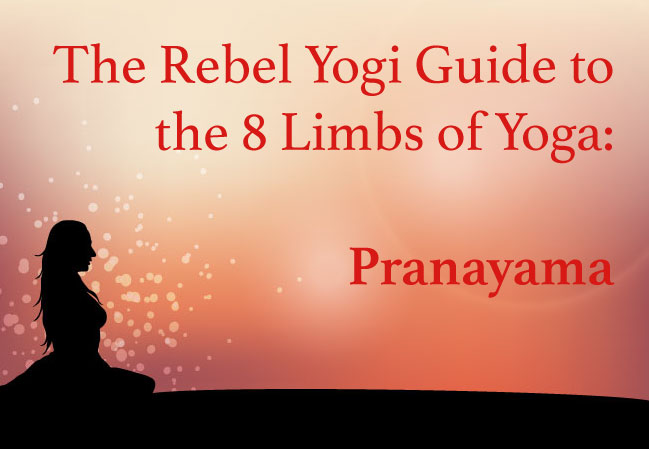This August I want to take you deeper into the full practice of yoga. This means that we’re going to explore the 8 limbs of yoga from the perspective of the world-changer. I’ll do my best to help you answer the question “just what are these 8 limbs, and what the heck do they have to do with me?”
Last month, we began an exploration of Asana, the physical practice of yoga; Yama, the abstentions; and Niyama, the observances. We now move on to the fourth limb of yoga: Pranayama, breathing practices. You may remember a post about breathing from earlier this year, and today I want to go deeper into this topic.
The literal translation of pranayama means control (ayama) of the life-force (prana).
If we take a look at the concept of Prana, we understand it to mean the energy that makes up the entire cosmos, the sum total of all the energy that is manifest in the universe. When we’re talking about this energy, we can reference physics for examples of our definition of energy: kinetic, radiant, potential, thermal, etc.
So, you may gather that pranayama goes a lot deeper than just breathing; it’s the regulation of the prana, which is achieved through controlling the breath, regulating our inhalations and exhalations. And, as in our asana practice, our breathing practice should be gentle, slow and fully controlled (no straining!).
Pranayama is incredibly beneficial, supercharging the blood with a fresh supply of oxygen, which then gets distributed through the entire body. It also balances the nervous system and promotes the elimination of toxins from the body. You can use pranayama to warm the body when you are cold, or to cool the body when you are overheated.
Pranayama is also an excellent way to prepare the mind for meditation. When you work on and focus your breathing, the mind begins to become calm and still; since the mind and breath are closely related, the mind can be calmed by regulating your breath.
As you may have come to expect from this series of posts, pranayama is closely tied to the other limbs of yoga. If you think back to our exploration of Yama, and more specifically Brahmacarya (the practice of moderation), it ties in with our use of prana. Prana gets wasted in many ways: moving the body and the mind unnecessarily, talking too much without any real purpose, overeating… But one of the biggest causes of wasted prana is high levels of stress. Anything you overdo causes you to waste prana. It would be like leaving your car with the engine running while you were home for lunch – why would you want to waste that fuel?
For this particular exploration, I also want to pass along some tips for how to practice pranayama:
- Except for cooling breaths, all breathing should be done through the nose. The nose does some pretty amazing things; it warms, moisturizes and filters the air that goes into the body, which makes our breathing practice easier on the lungs. When we breathe out through the mouth, we release prana – and since our pranayama practice is about controlling the prana, it’s beneficial to breathe through the nose so we’re not losing any in the process.
- When you’re just beginning to practice pranayama, keep the patterns of inhalation and exhalation even – three counts in, three counts out. Once your practice becomes more advanced, you can then think about starting to make the exhalations longer than the inhalations.
- If you become dizzy, lightheaded or begin to strain, take a break from the practice, and return the breath to normal.
- There’s no reason to rush! Building your pranayama practice takes time, and should never be done in a hurry. Because it impacts the heart, lungs and nervous system, it’s best to always be gentle in your practice and avoid any strain. (Remember our exploration of asana – steady and comfortable? That applies here, too.)
We have now worked our way through the first four limbs of yoga: Yama, Niyama, Asana and Pranayama. I hope that these explorations have been helpful as you begin to navigate your own yogic path. We will continue to build on the knowledge gained here as we bring yoga into our day to day lives, and begin to integrate it into our world-changing! As always, please don’t hesitate to reach out with any questions or comments, and I’m always happy to delve deeper or have longer conversations around anything I write about here!
These explorations of the Yoga Sutras are being fueled by both the Edwin Bryant and Swami Satchidananda commentaries. This week’s post also draws from Swami Satchidananda’s “The Breath of Life: Integral Yoga Pranayama”.

Leave a Reply